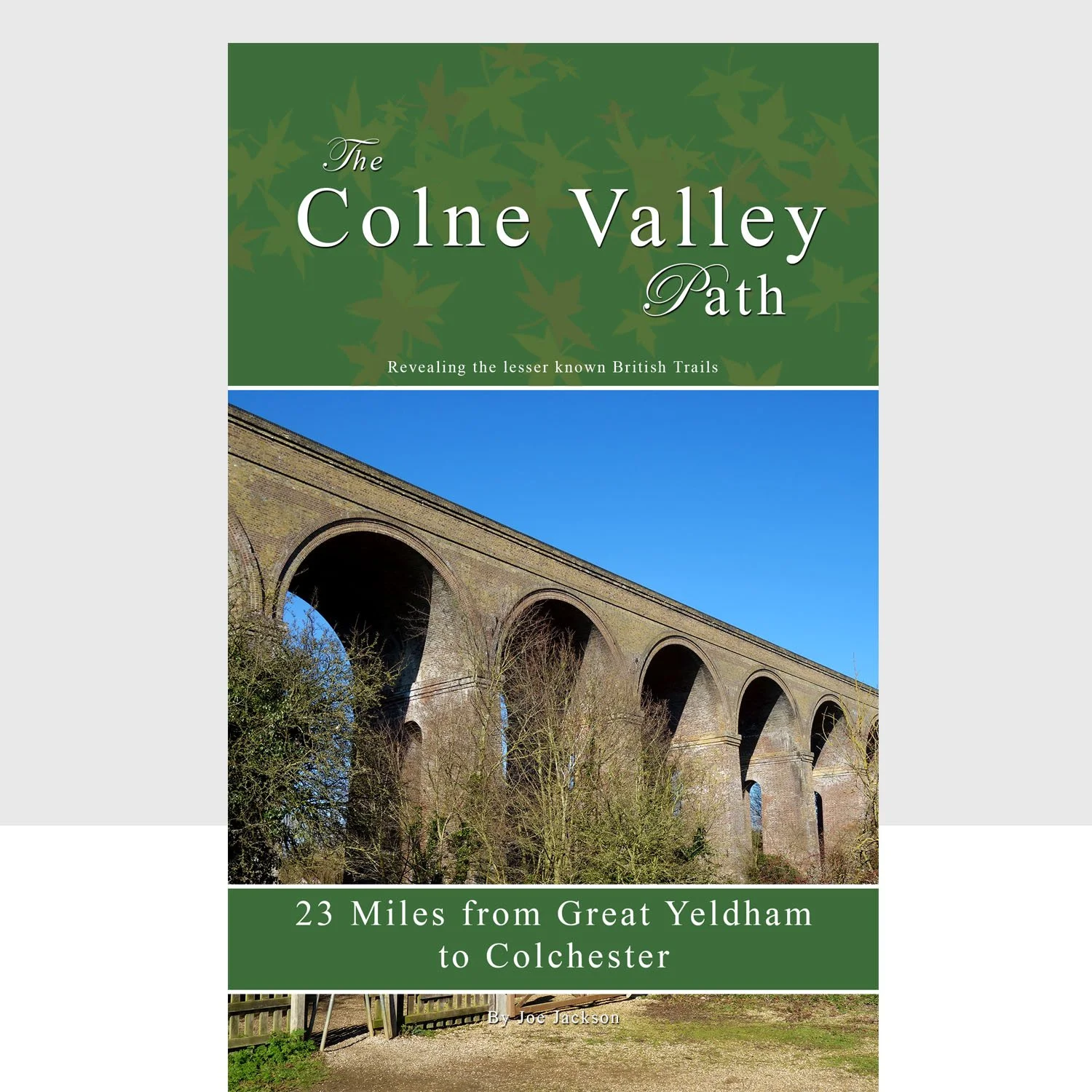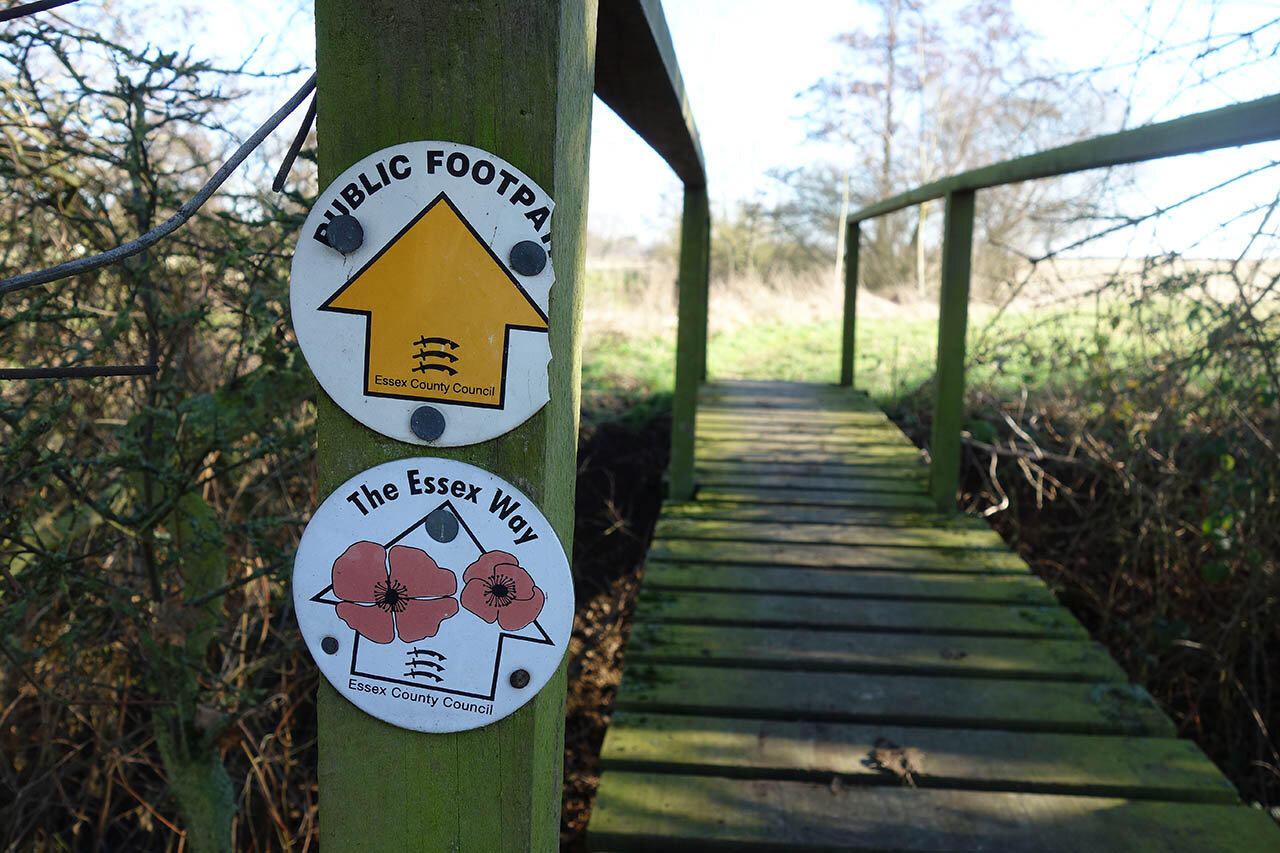Colne Valley Path
Guidebook available in the shop!
Distance: 23 Miles
Start: Great Yeldham, Essex
Finish: Colchester, Essex
The Colne Valley Path is a short long distance route that follows the Colne Valley from Great Yeldham to Colchester. There are several interesting features seen along the route including the Norman Castle at Castle Hedingham, The River Colne itself, Chappel Viaduct and the Roman ruins in Colchester. At 23 miles in length it can be completed in a long single days walking but more enjoyable over 2 or 3 short days.
Day 1 - Great Yeldham to Halstead (14.4km)
After having a good look at all of the trails nearby to home thanks to the LDWA website I found the Colne Valley Path which I had never heard of before and being so local I could split the walk down into several days and use public transport which serves the route well to do short linear walks. This is the first part of 9 miles. I parked at Halstead and got the bus for a couple of pounds up to Great Yeldham where it stops just next to the Great Oak which marks the start of the trail.
The Great Oak marks the start of the Colne Valley Path.
Reading about its history.
The route has a few waymarks around, but as it is not marked on the OS Map you need to have researched the route properly to make sure you don’t go astray.
Open fields on the way to Castle Hedingham.
A little muddy along here...
The footpath passes directly under a large Pylon.
The Colne Valley Railway.
Hedingham Castle over the tree tops.
Castle Hedingham church.
Castle Lane which I think probably was the original route up to the castle from the village.
Hedingham Castle.
One of several Mills along the Colne.
A weeded up River Colne.
The line of the old Railway which once ran along the valley floor.
More open countryside as I approach Halstead.
Halstead church past a large industrial estate to which the path goes around.
Day 2 - Halstead to Wakes Colne (11.2km)
The second and shortest day along the Colne Valley Path starts at the village of Halstead and continues for 7 Miles to the village of Wakes Colne and Chappel. From here I got the bus back to Halstead.
A glorious sunny day today as I walk along the river at Halstead.
Following the signs.
More traces of the old railway.
Barely a cloud in the sky.
The line of the old railway.
The church at Colne Engaine.
Zooming in on the church.
A weir along the River Colne.
The route finally joins the old railway line for a short way.
The route ahead.
Distant view of Chappel Viaduct.
Beautiful country estate.
A small fishing lake as I approach Chappel.
A Mill at Chappel.
One of several churches in Chappel and Wakes Colne. This one sits directly along the path and also marks the point I turned off route to catch the bus back by the village shop.
Day 3- Wakes Colne to Colchester (14.4km)
The final leg of the Colne Valley Path which is again made easy thanks to excellent bus services along the route. Starting at Chappel, I'm heading for the ancient Roman Capital of Colchester to explore its rich history.
Approaching Chappel Viaduct.
Chappel Viaduct is one of the largest Brick structures in the country at a length of 323m.
The River Colne.
Parts of this section follow the Essex Way - another long distance trail.
A WW2 Pillbox along the riverbank.
Another beautiful day for a walk! This is the River Colne near Ford Street.
Old houses at Ford Street.
Its just after Ford Street the path gains a little elevation for some lovely views over the Colne Valley.
Back down at the valley floor - this section is littered with Pillboxes.
Stunning ancient Timber Framed house near West Bergholt - Probably 15th or 16th Century.
Lovely views back from where I have come from.
Crossing the railway into Colchester.
Colchester ahead.
The Balkerne Gate - the official end to the route. The gate is the largest remaining Roman gatehouse in the country. From here I decided to continue to see the other historical treats of Colchester before getting the Bus back.
Jumbo Water Tower at 130ft tall.
Colchester Castle Norman Keep - made from reused Roman Materials.
The beautiful ruin of St Botophs Priory - again made from lots of reused roman materials.























































